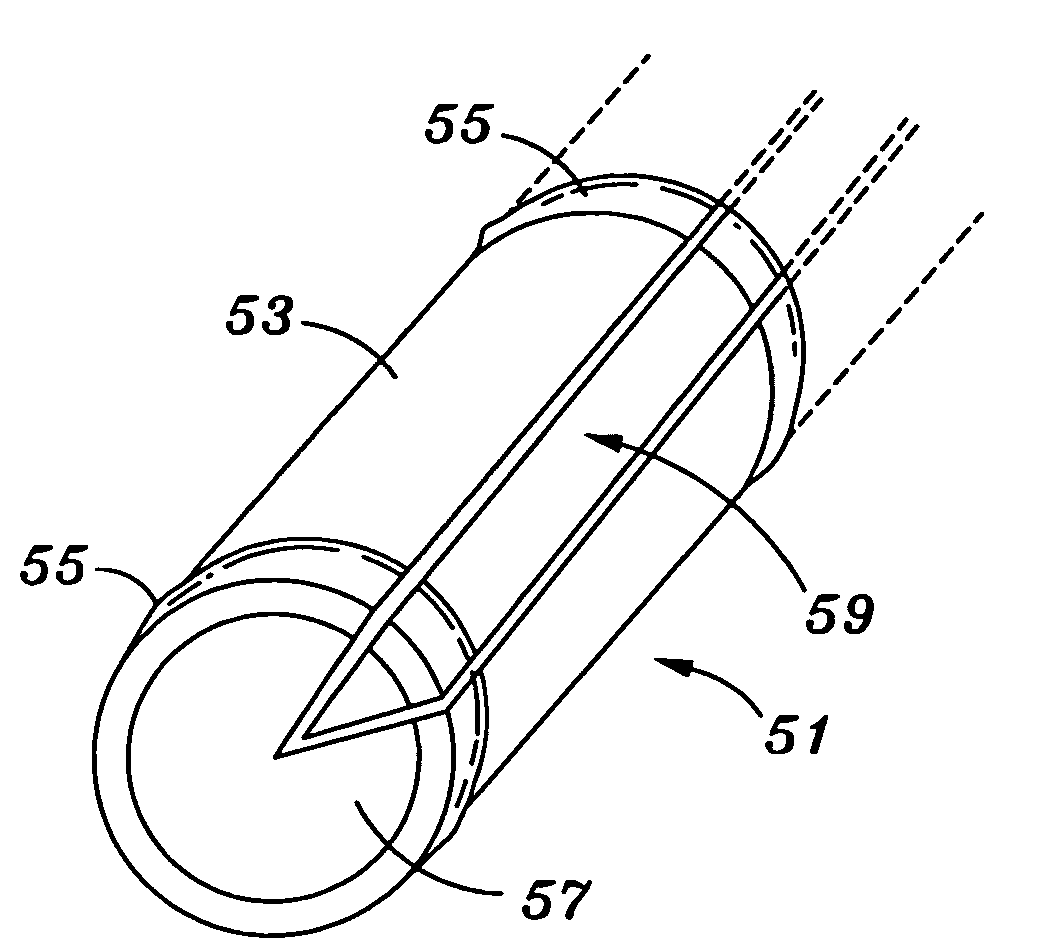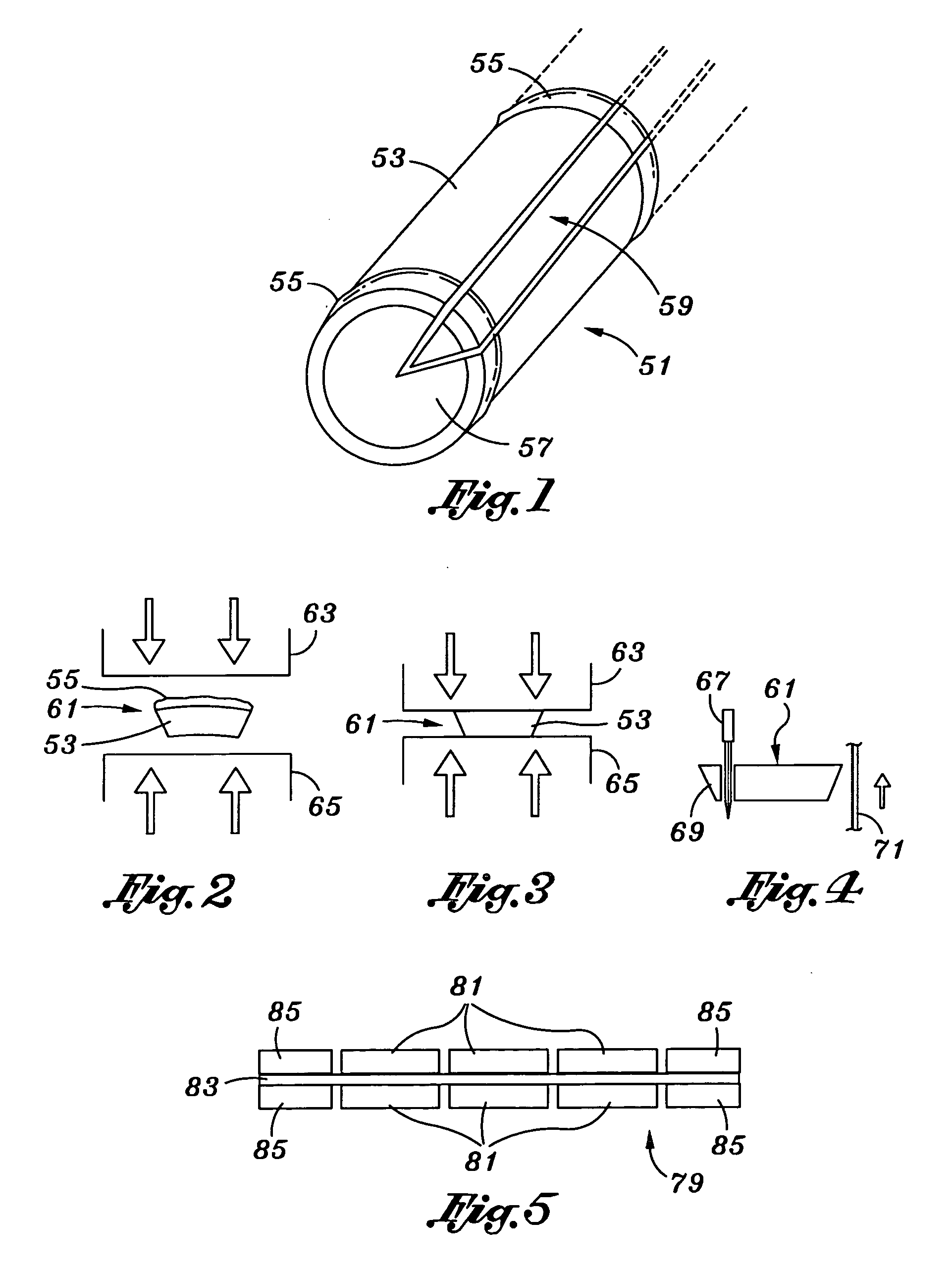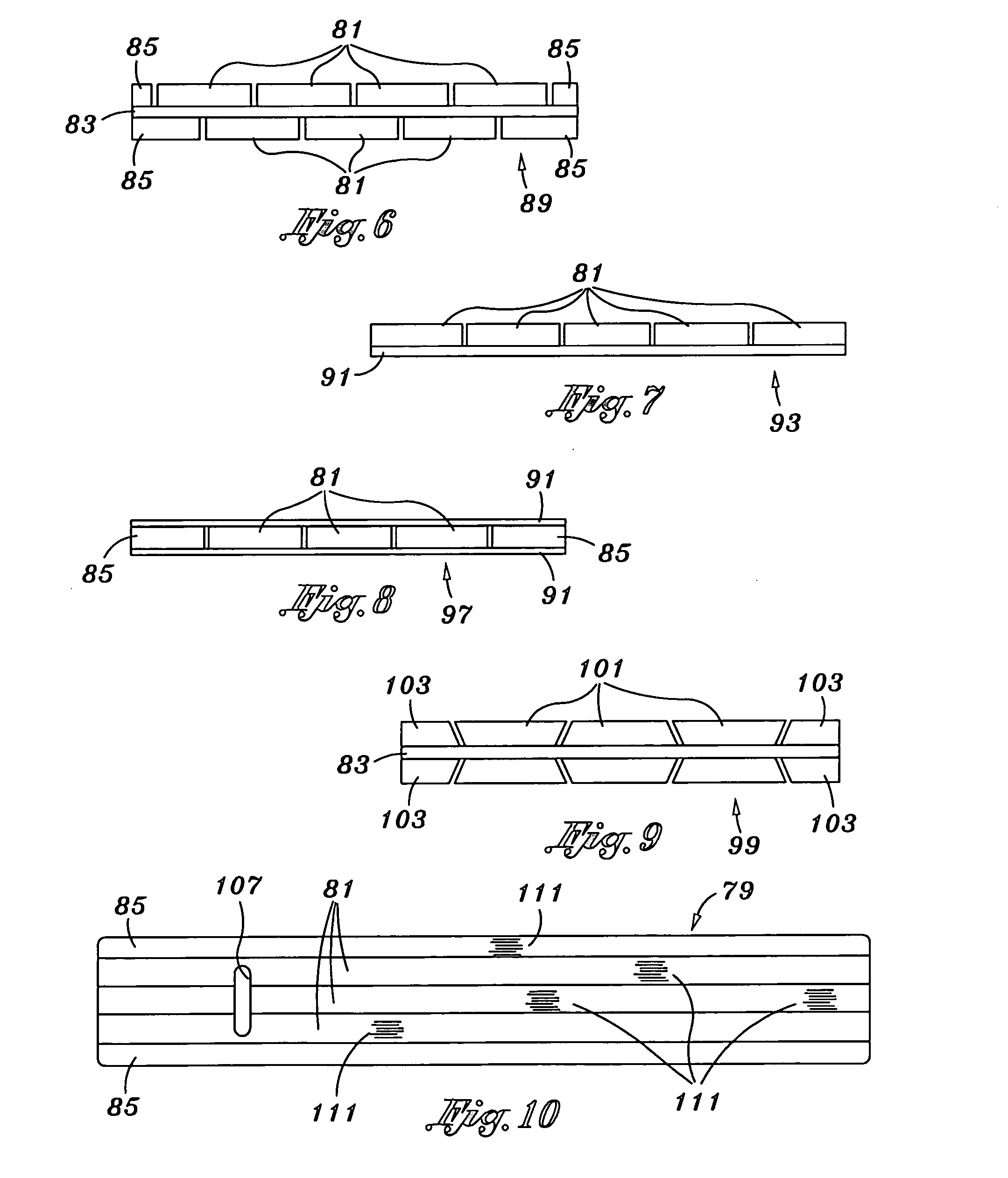Bamboo composition slat system, covering and method
a composition slat and bamboo technology, applied in the field of bamboo composition slat system, covering and method, can solve the problems of increasing the cost of tree material which can be cut into slices of planar cut wood, increasing the cost of tree material, and requiring a much lower percentage of usable wood for the type of use, so as to achieve the effect of expanding and efficien
- Summary
- Abstract
- Description
- Claims
- Application Information
AI Technical Summary
Benefits of technology
Problems solved by technology
Method used
Image
Examples
Embodiment Construction
[0029]The description and operation of the shutter system of the invention will begun to be best described with reference to FIG. 1 which illustrates a perspective view of a short length of pole shaped bamboo, known as culm 51. Culm 51 includes internodes portions 53 between spaced apart nodes 55. At each node 55, an internal portion 57 of the node 55 acts to isolate each internode portion from the inside of each internode portion 53.
[0030]As is shown a section 59 of bamboo material is cut from the culm 51 and will be formed into a strip of bamboo. The section 59 is shown as a wedge shaped section with respect to the internal portion 57, but the cut need not necessarily result in a wedge shape. The geometry of the culm 51 dictates that the most efficient cut would be transverse where the culm 51 material is to be flattened. A chord cut may result in a less efficient use of material as will be shown.
[0031]It should be remembered that the diameter of the culm 51 can vary widely both i...
PUM
 Login to View More
Login to View More Abstract
Description
Claims
Application Information
 Login to View More
Login to View More - R&D
- Intellectual Property
- Life Sciences
- Materials
- Tech Scout
- Unparalleled Data Quality
- Higher Quality Content
- 60% Fewer Hallucinations
Browse by: Latest US Patents, China's latest patents, Technical Efficacy Thesaurus, Application Domain, Technology Topic, Popular Technical Reports.
© 2025 PatSnap. All rights reserved.Legal|Privacy policy|Modern Slavery Act Transparency Statement|Sitemap|About US| Contact US: help@patsnap.com



